The best ski helmets of 2024, tried and tested
Content is created by CNN Underscored’s team of editors who work independently from the CNN newsroom. When you buy through links on our site, CNN and its syndication partners may earn a commission. Learn more
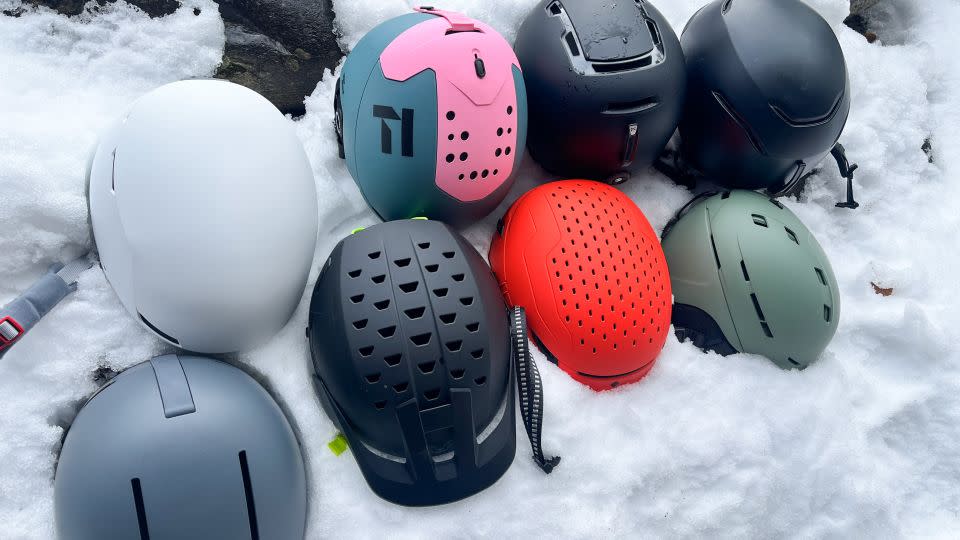
It’s a rarity these days to see anyone skiing without a helmet on their head, but it wasn’t until around 2010 that ski helmets became the overwhelming choice on the slopes. While there are no rules or laws mandating the use of ski helmets, most resorts do require them for any children taking ski school lessons as well as for ski patrol and ski instructors.
It’s easy to understand why. Ski helmets may not prevent traumatic brain injuries, but they do minimize head injuries. Plus, they’re now a part of ski style with helmets flaunting visors, unique colors and fun patterns to help shredders define their slopeside look.
To help you find the best ski helmet for you, we tested 10 of the most popular brain buckets this season, including both resort and backcountry ski helmets. To do so, we shredded laps at Aspen Snowmass Ski Resort, rode the Peloton bike to gauge relative breathability and jogged a couple of circles around the neighborhood in winter weather to evaluate overall warmth. We also looked at any type of rotational impact protection and considered the scores from Virginia Tech Helmet Ratings, when applicable. In the end, we found our winners. Here are the results.
Flaxta Deep Space MIPS
Best ski helmet for resort skiing
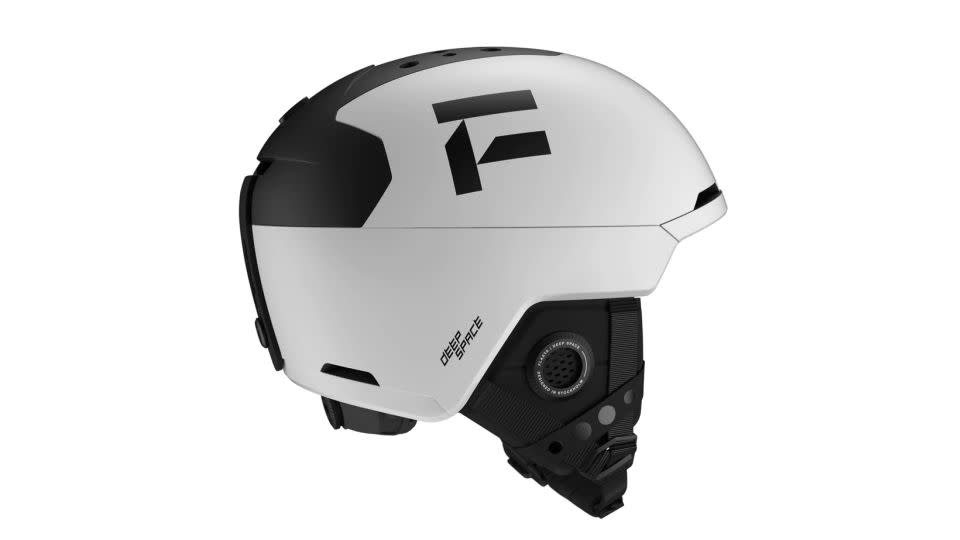
Not only does the Deep Space MIPS helmet use recycled foam in the core but it has a Primaloft liner for warmth, adjustable vents for breathability and pre-formed ear pads that don’t squish your ears. The helmet comes with MIPS, and your color scheme is interchangeable with any of their hardshell tops and goggle clips (sold separately).
$220 at Flaxta
$200 at Backcountry
Smith Summit MIPS
Best ski helmet for backcountry skiing
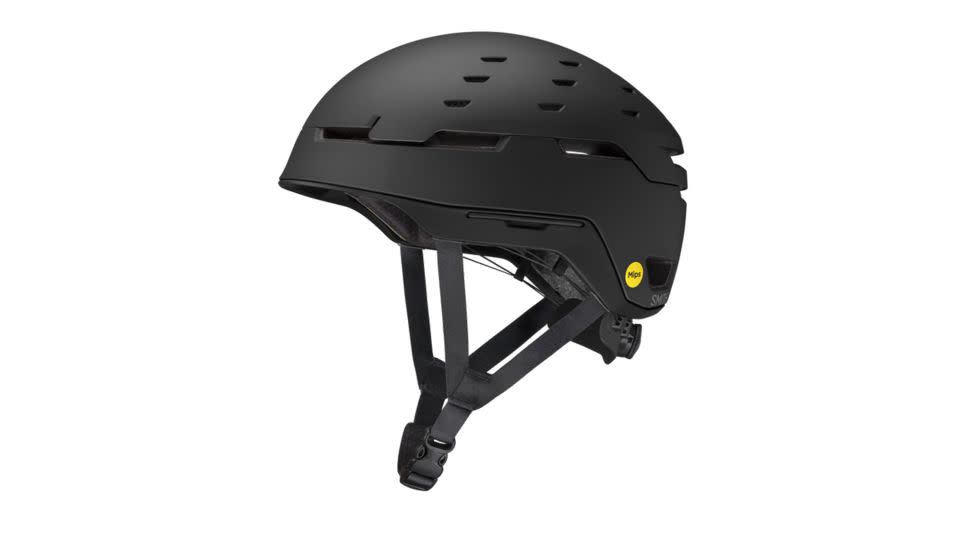
The Summit is triple certified, so it’s considered safe for skiing and mountaineering. Plus, it comes with both MIPS and zonal Koroyd, an overall impact protection system. There is no insulation but it has plenty of vents and it easily fits over a hat. It clocks in at just under a pound, so it will almost disappear in your backpack.
From $138 at Smith Optics
$230 at REI
Best ski helmet for resort skiing: Flaxta Deep Space MIPS
$220 at Flaxta or $200 at Backcountry
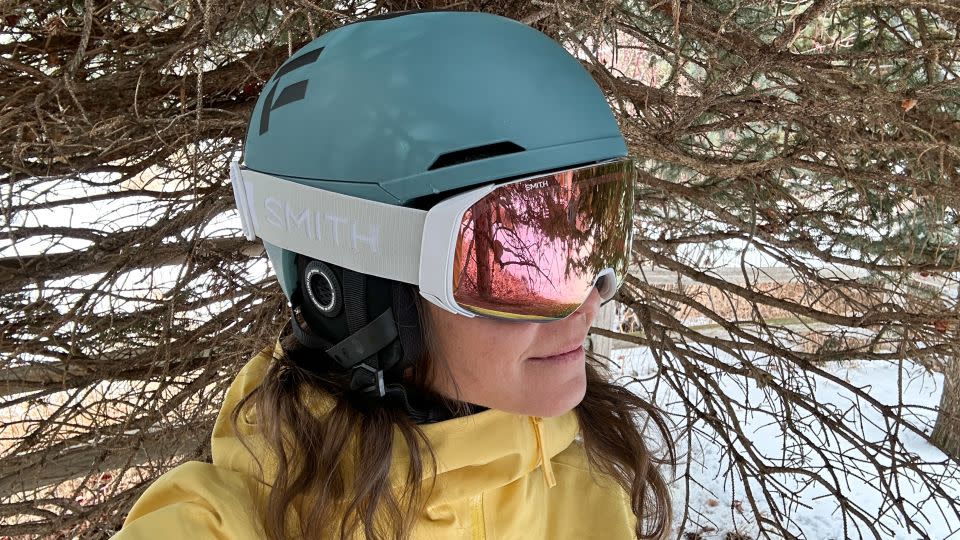
It’s rare to find a ski helmet that includes all the features you really want for less than $250, but that’s exactly what you’ll get with the Flaxta Deep Space MIPS. This helmet checks all the boxes: safety, style, comfort and performance. While it certainly doesn’t fall into the budget category, we think the Deep Space is a killer value from this up-and-coming outdoor manufacturer.
If you struggle with temperature regulation, the Deep Space is for you. For starters, the interior is lined with Primaloft, a popular type of synthetic insulation. In testing, we wore this helmet while skiing in temperatures as low as 5 degrees Fahrenheit and it kept our head warm without an additional hat or beanie. We also wore it while walking around our neighborhood with temperatures hovering between 15 and 20 degrees Fahrenheit in complete comfort. When compared to the other ski helmets in this test, the Deep Space tied for the top spot in warmth alongside the Smith Nexus.
In our test, there were only two other resort ski helmets with adjustable venting beside the Deep Space MIPS: the Smith Nexus and the Anon Merak. Fourteen circular vents sit atop the helmet, and they can be closed or open with a sliding tab. We kept them closed during our testing walk, ensuring maximum warmth. However, we left them open while pedaling on our Peloton in the basement for five minutes to evaluate breathability. With the liner in, the Deep Space felt like it lacked breathability, even with the vents; however, once we removed the liner, the fresh air started flowing through our locks, putting the Deep Space at the top of testing when compared to the other resort-specific helmets. With the combination of a Primaloft liner and 14 vents, the Deep Space MIPS was the most versatile helmet out of any we tested, if you’re willing to remove and reattach the liner depending on the temperature. If you want to prioritize breathability over everything else though, a backcountry helmet like our winner, the Smith Summit MIPS, or the Sweet Protection Ascender might be a better pick for you.
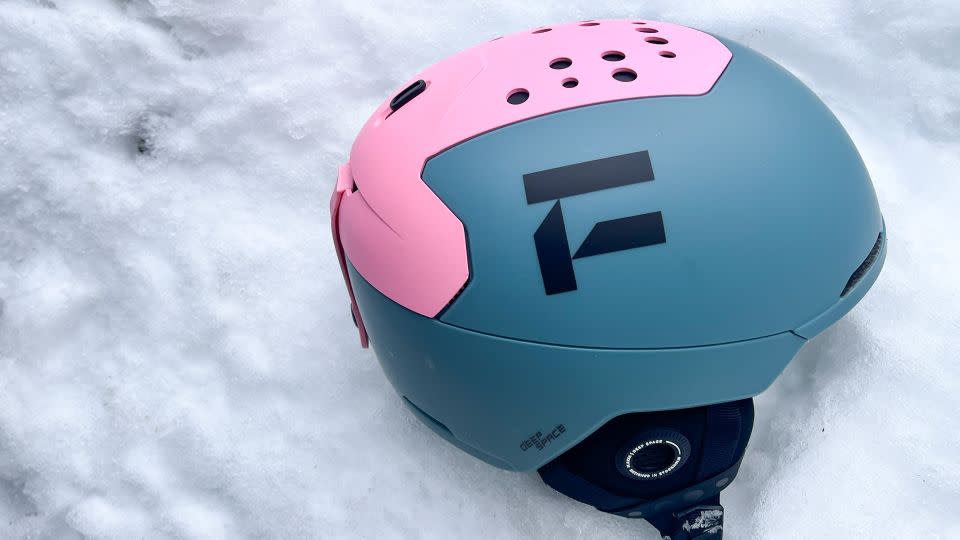
The fit of the helmet was a highlight we didn’t see coming. Flaxta uses pre-formed ear pads that have the centers carved out, allowing for more space against your ear — and it was the only helmet in our test to do so. This didn’t affect warmth, but it did add to the comfort and it was the only helmet that did not apply any pressure to our ears. We also liked the BOA dial on the back that carefully adjusts the perfect fit. Every helmet we tested has this same feature, so it isn’t unique, but it’s nice to have all the same.
Most of us wear helmets to protect our domes, and the Deep Space certainly checks the safety box. Not only is it ASTM F2040 and EN 1077-B certified but it includes MIPS, one of the most popular protection systems out there — five of the 10 helmets we tested feature it. We aren’t saying that MIPS is better than any of the other protection systems (read more on the certifications and protections below). But it was on the more affordable end of our spectrum, alongside two other helmets without any type of rotational impact protection included. To us, there’s a lot of value there.
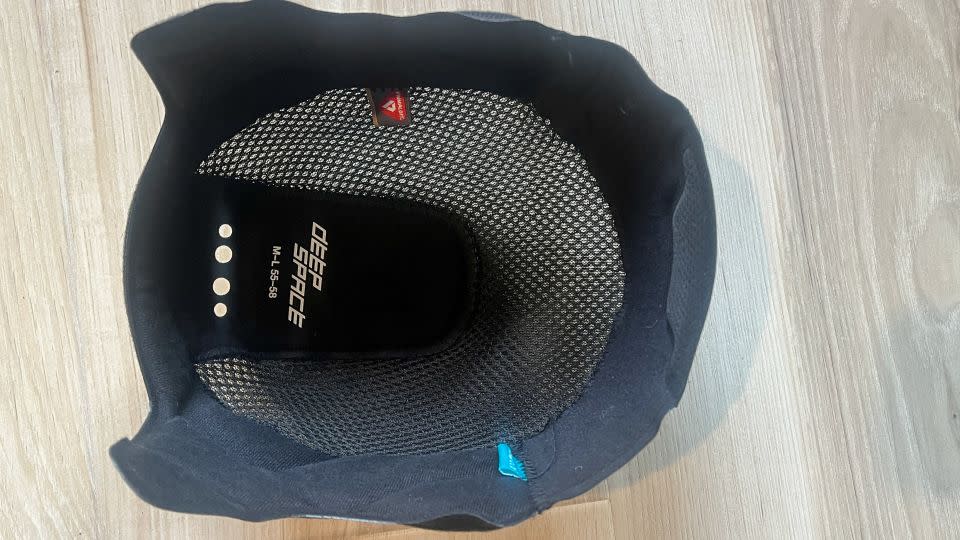
Bonus: This Flaxta helmet has style (albeit with a bit of a bulbous fit). We wore it with three different brands of goggles: Flaxta, Smith and Anon. Each pair sat flush against the top brim of the helmet, ensuring a secure fit without any of the dreaded “gaper gap.” More importantly, the Deep Space is the only helmet in our test that has customization options. Known as Flaxta ID, both the hard-shell top panel and silicone goggle clip snap out and can be replaced with another of a different color. These accessories are sold separately but are affordable, so it’s a nice option to add a little flare.
Best ski helmet for backcountry skiing: Smith Summit MIPS
$230 From $183 at Smith or $230 at REI
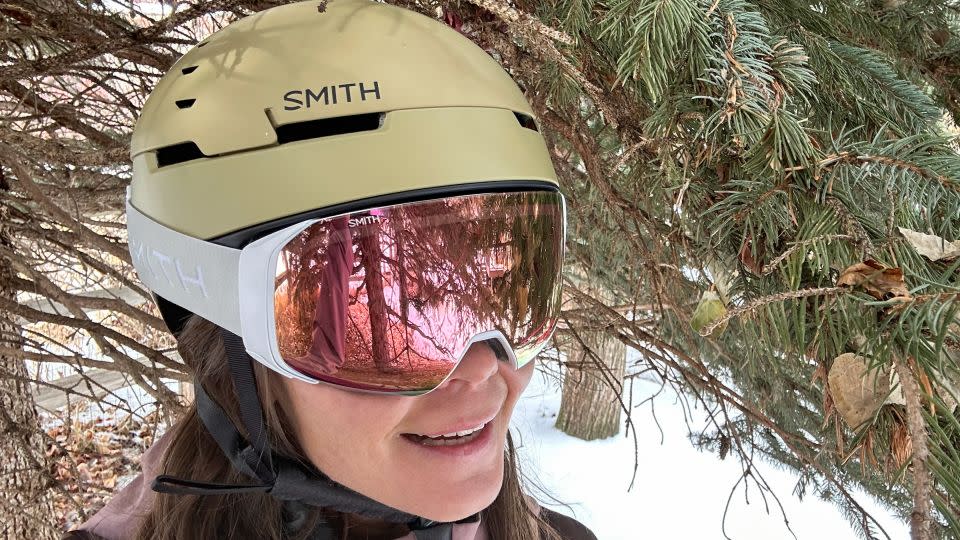
If you’re going to nab a backcountry skiing-specific helmet, you’ll be hard-pressed to find one with a better set of features than the Summit. Unlike resort skiing where warmth is critical and weight doesn’t matter, backcountry skiers often need maximum breathability and minimal weight so they can shoulder their packs on the steady climbs. This helmet doesn’t have any insulation, but that’s small potatoes since it excels with a slim profile and generous ventilation.
Backcountry skiing helmets sometimes have questionable comfort since luxuries are often traded for fewer ounces. But not with the Summit. At just under 1 pound, it is the heaviest backcountry helmet in our test, but it’s still light enough that you forget it’s on your head. A key feature is the flexible BOA dial on the back. Every other backcountry ski helmet in our test with a BOA system used hard plastic to adjust the helmet’s fit. In contrast, the Summit’s BOA dial sits on a moldable piece of foam that conforms to your head — no matter what you’re wearing. We wore the Summit over a beanie, a baseball cap and our bare head, and it easily accommodated the shape and was much more comfortable than any other backcountry helmet we tried. Plus, it makes the helmet more durable. Since backcountry skiers often cram their helmets inside a backpack during the climb, this flexible system is less likely to get broken when compared to crunchy plastic.
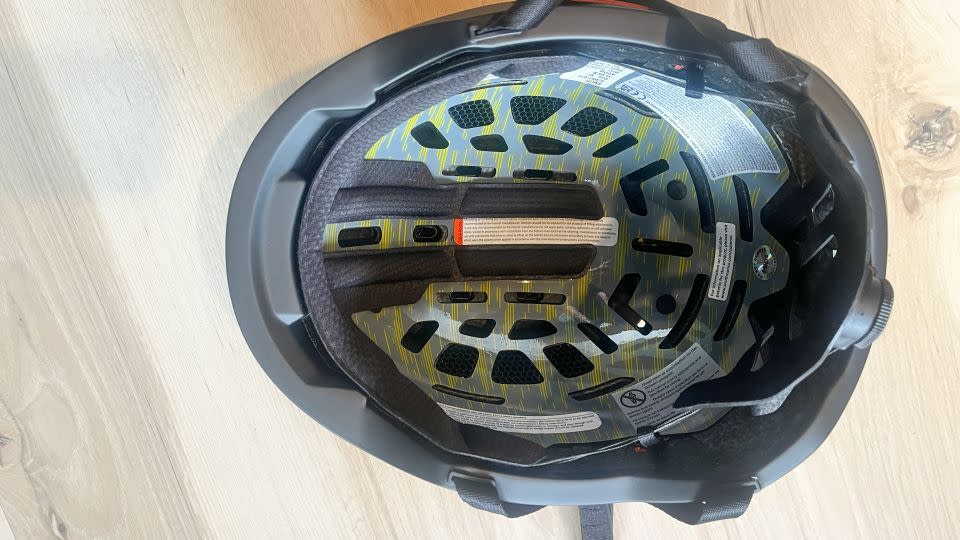
During our test on the Peloton, the Summit came in a close second to the Sweet Protection Ascender for the most breathable helmet. That’s because there are 33 nonadjustable vents scattered around the helmet, ensuring ample airflow no matter what you’re doing. The lack of insulation does mean the Summit runs colder — the Salomon MTN Lab was the warmest backcountry helmet in our test — but that’s why Smith includes a skullcap to wear beneath.
The Summit does weigh 2 ounces more than the Salomon MTN Lab, the runner-up for the best backcountry ski helmet. And while that may seem like a fair amount, depending on how intensely you’re counting ounces, we felt the additional safety protections were worth the minor weight penalty. The Smith Summit has both MIPS and Koroyd; the former is a rotational impact protection system and the latter is an overall impact protection system that works in conjunction with the MIPS liners. Of the four backcountry ski helmets in our test, only two include MIPS: the Summit and the Sweet Protection Ascender. The Summit is the only one to have additional protections beyond that. The data is inconclusive as to whether double the technology actually amounts to double the protection, but the Summit costs relatively the same as the other backcountry ski helmets, so we think it’s worth it.
How to choose a ski helmet
We all wear ski helmets to protect our heads, so it’s a good idea to know what to look for. First, consider the safety protections on your ski helmet. Any ski helmet you slap on your head should have one of two snow sports safety certifications: F2040 from the American Society for Testing and Materials (ASTM) or EN 1077A/B from the European Committee for Standardization (CEN). All the helmets we tested have one of these and almost any US-based retailer will only carry ski helmets that hold one of those certifications. If you plan on attempting multiple sports (like mountaineering) and want to use the same helmet, look for a helmet with dual or triple certifications. The Smith Summit MIPS, Salomon MTN Lab, Sweet Protection Ascender and Dynafit TLT are all triple certified.
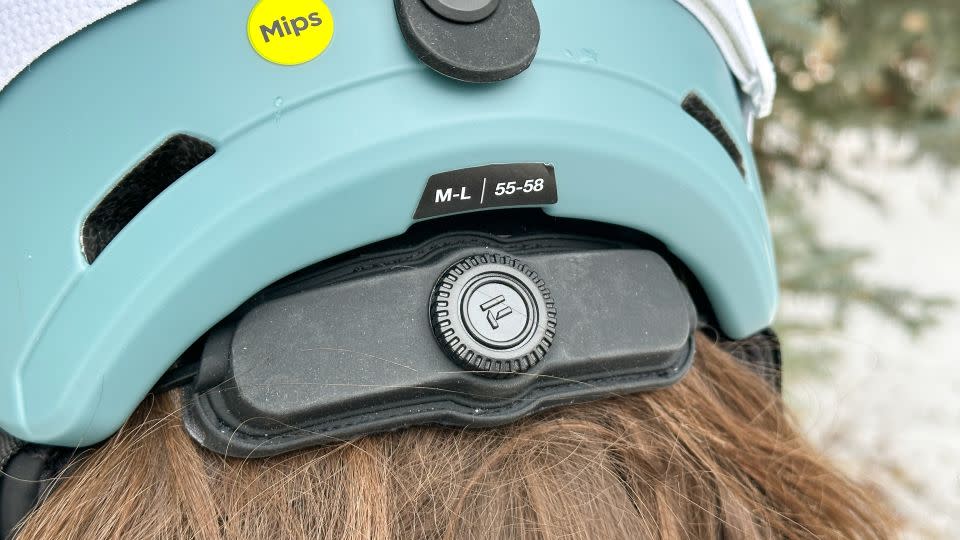
Skiers should also consider if they want to add any type of rotational impact protection system technology. These have all been designed to reduce impact from an angle by allowing your head to move separately from the helmet, hopefully minimizing damage from any rotational impact (which is not tested for under the basic certifications previously mentioned). Since there is no governing body mandating this type of protection as of yet, there are many options on the market: MIPS, WaveCel, SPIN and Koroyd are just a few. MIPS is the most popular, so much so that many people use the trademarked “MIPS” in place of the generic phrasing for rotational impact protection systems that represent all the available options (kind of like the whole Kleenex and tissue thing). But the data is inconclusive, so none of the systems have been proven to protect your head more than the others. Even MIPS itself will only say that having MIPS makes a helmet 10% better at handling rotational impacts than the same helmet without MIPS.
“It may help in certain situations, but we think it’s rather benign for the most part,” says Barry Miller, the director of outreach for the Virginia Tech Helmet Lab, a nonaffiliated organization that supplements certification standards with real-world, sports-specific helmet ratings via tests conducted at their facility. “If I had the choice to buy a helmet with MIPS and without MIPS and it was the same cost, I’d pick the one with MIPS.”
Beyond safety, it’s a good idea to consider the warmth of your ski helmet. If you plan to use it skiing at a resort, warmth is a key factor since it gets quite chilly on those chairlifts. Most helmets have some type of liner that adds warmth and comfort, but you’ll definitely get what you pay for. Higher-end helmets like the Flaxta Deep Space MIPS use well-known materials such as Primaloft to add coziness, whereas less expensive brands tend to use cheaper alternatives that pack out over time.
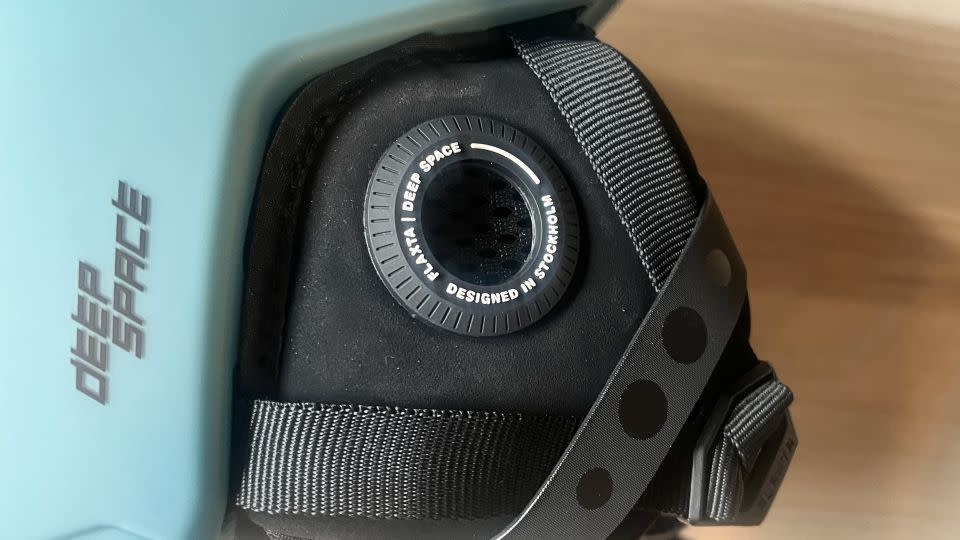
Breathability and ventilation are also important. Resort skiers often open and close their vents to counteract a chill on the chairlift or overheating after crushing a run of bumps. Backcountry skiers often wear their helmets on the climb where sweatiness is a given. Not only should you consider the quantity of vents but it’s important to look at the placement. Ideally, we want cold air to come in through the front of the helmet and warm air to escape through the back, almost like a vacuum. Finally, we almost always prioritize adjustable vents that can be opened and closed. This does add to the cost, however, so think about if it’s worth it for you.
There are a number of features on ski helmets too. Chin straps keep the helmet attached to your head, but most buckles are either a sideways clip or magnetic. Sideways clips are secure, but they can be tricky to navigate while wearing gloves. That’s why we prefer magnetic chin strap buckles, although they do come with an added cost.
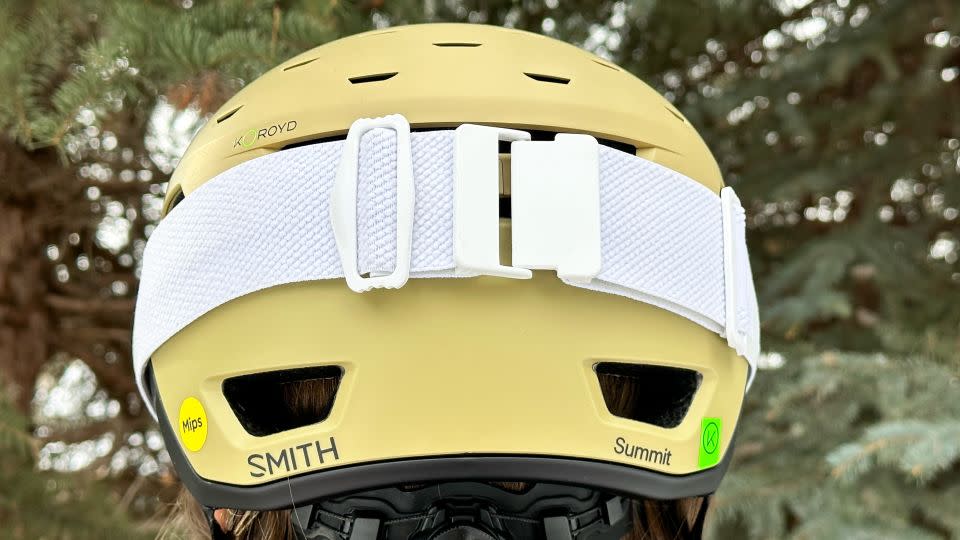
Anyone who has ever rag-dolled down a mountain knows it’s a bummer when your goggles fly into a snowdrift. That’s the purpose of a goggle clip: to secure them to your helmet in case of a crash. Cheaper helmets tend to use a basic plastic clip while pricier options use bungee cords or silicone straps. Some are nicer to use than others, but we feel that they all get the job done.
Aside from choosing your color, customization hasn’t been a popular option in ski helmets. That’s why we like the fun accessories for the Flaxta Deep Space MIPS. Anything that adds a little flare is considered a win in our book.
How we tested
To determine the best ski helmets, we objectively evaluated all sorts of variables from warmth and ventilation to fit, comfort and style. To do this, we divided the testing into five categories: protection, comfort, weather resistance, goggle compatibility and features. From there, we directly compared the features of each helmet through in-field testing and scripted, standardized tests. Here’s the full breakdown of our process.
Protection
Certifications: Is this helmet certified by ASTM or CEN?
Rotational impact protection: Does this helmet have any type of additional protection system technology such as MIPS, WaveCel or SPIN?
Comfort
Fit: We wore the helmet both on the ski slopes and while walking around the neighborhood to gauge relative comfort.
Fitting process: To determine the ease of the adjustment process, we cinched up the helmet while wearing gloves and mittens.
Chin strap: We wore this next-to-skin (without a neck gaiter) while walking around the block to determine how comfortable it felt on bare flesh.
Backcountry helmets: How much does it weigh?
Weather resistance
Warmth: In addition to skiing, we walked around the block during a snowstorm to determine relative warmth. We also tried each helmet on with and without a beanie to gauge the difference in warmth.
Breathability: We counted all the vents and determined if they were adjustable. Then we rode on the Peloton bike for five minutes to determine whether the ventilation added breathability.
Goggle compatibility
Goggle fit: We tried on each helmet with three goggles by three different brands: Flaxta, Smith and Anon. We looked in the mirror to determine how snug the fit was against the helmet brim.
Goggle pressure: We wore goggles with the helmet while walking around the block to determine how well the two paired and whether there were any pressure points that caused tension or headaches.
Features
Goggle clip: Is it plastic, a bungee or silicone?
Chin strap clips: We clipped and unclipped them while wearing mittens to determine how easy they are to use.
Other ski helmets we tested
Anon Logan WaveCel
$240 From $120 at Anon or $240 at Amazon
The Logan tested incredibly well due to its lightweight nature, fun style, WaveCel protection and magnetic chin strap. However, it isn’t nearly as warm as the Flaxta Deep Space, and we struggled to wear it without a gaiter or beanie. However, it is one of the few ski helmets rated by the Virginia Tech Helmet Lab, at number 28 out of 35 helmets.
Salomon MTN Lab
$250 at Salomon or $200 From $170 at Cripple Creek Backcountry
The Salomon MTN Lab was a very close runner-up for the best backcountry ski helmet due to its all-around aesthetics and overall lower weight. It’s far warmer than the Smith Summit and is also triple certified, but it costs a smidge more and does not have any type of rotational impact protection system.
Smith Nexus MIPS
$325 at Smith and REI
In general, there is a lot to love about the Nexus. It’s incredibly warm, has tons of adjustable ventilation, fits well and boasts both Koroyd and MIPS. It’s way heavier than the Deep Space — and the most expensive helmet we tested.
Anon Merak WaveCel
$320 at REI
Similar to the Smith Nexus, the Merak is fully loaded with 19 adjustable vents, WaveCel technology, a magnetic chin strap buckle and fleece-lined ear pads and liner for bonus comfort. It’s one of two helmets we tested to be rated by Virginia Tech Helmet Labs, landing at number 16 of the 35 rated helmets. But the Merak felt much colder on the slopes than the Flaxta Deep Space helmet and costs nearly $100 more.
Salomon Brigade MIPS
$200 at Salomon and Evo
The Salomon Brigade is an innocuous helmet. It fits well, has MIPS and worked relatively well with two of the three goggles we tested. But it only has two large vents and four small ones — all fixed — so breathability was inferior to the Flaxta Deep Space helmet. And we struggled to work the unique helmet clip while wearing mittens.
Sweet Protection Ascender MIPS
$220 at Sweet Protection and Backcountry
Holy ventilation (pun intended). The Ascender backcountry helmet has a whopping 108 ventilation holes scattered throughout the top, making this helmet the second lightest in our test and ranking near the top for breathability alongside the Smith Summit and Dynafit TLT. It also has MIPS. The lower profile trims weight but made it very difficult to keep goggles on, as they kept sliding off the back.
Dynafit TLT
$150 at Dynafit and Cripple Creek Backcountry
Depending on your use, there could be an argument for the TLT backcountry helmet. It’s the lightest and second-most affordable helmet we tested, as well as very breathable and triple certified. We also loved the removable visor. But it runs colder than the Summit, is less comfortable and doesn’t come with any rotational protection. Our take: This is a great helmet for hardcore ski mountaineers who shave every ounce but too niche for mainstream backcountry skiers.
Head Compact Pro
$140 at The Pro Ski and More
It’s nice to see that some helmets clock in below $150 these days, and the Compact Pro is incredibly warm, thanks to the cozy beanie liner. But it’s a shallow fit that often rubbed against the top of our head. And the toasty liner sits lower on the forehead than the helmet brim, making it impossible to find a tight seal with any of our testing goggles.
Note: The prices above reflect the retailers' listed price at the time of publication.
For more CNN news and newsletters create an account at CNN.com

